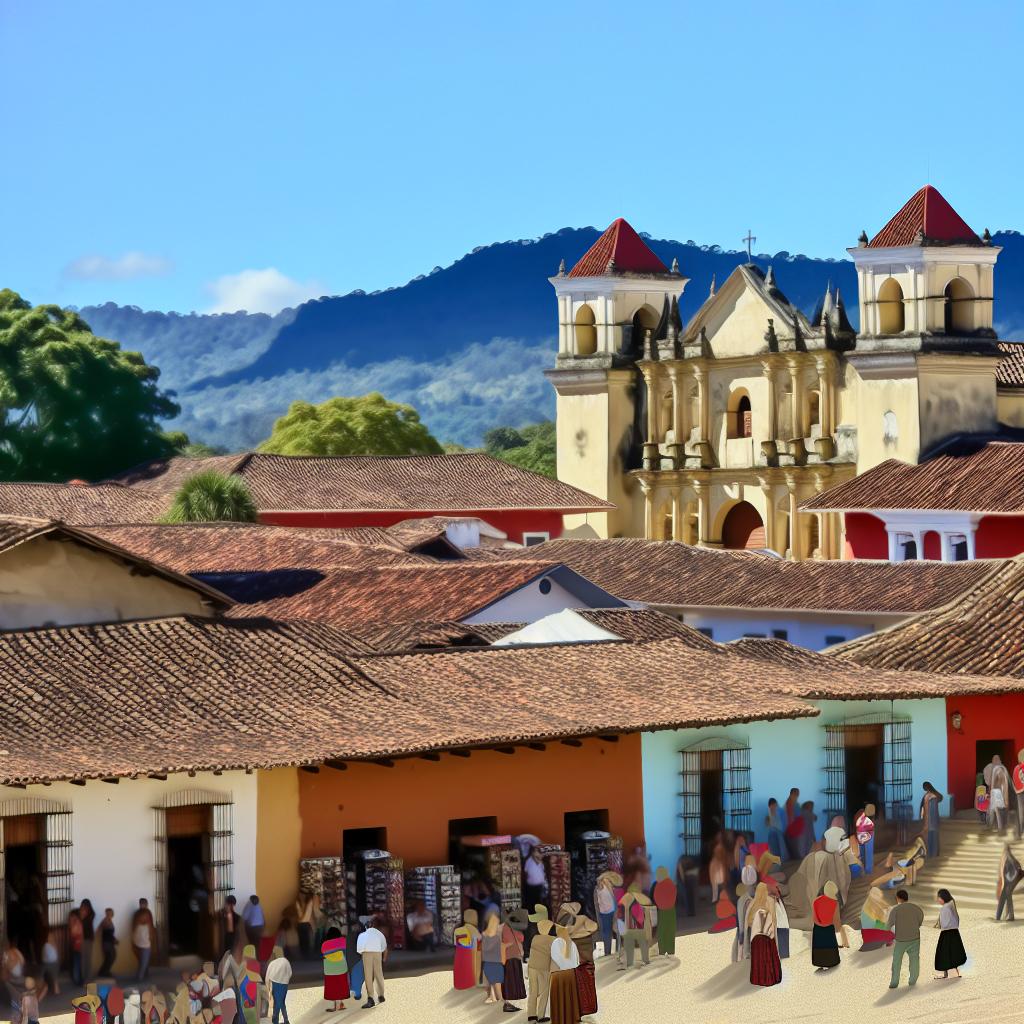Contents
Geographical Location
Comayagua is situated in the heart of Honduras within the scenic Comayagua Valley. This valley is notable for being bordered by majestic mountain ranges, contributing to the diverse and complex topography of the region. These mountains provide not only a natural beauty but also a range of ecosystems which add to the richness of the local biodiversity. The city itself is strategically positioned along the primary highway that connects the northern and southern parts of Honduras, making it a key link for both transportation and communication. Its geographical coordinates, approximately 14.4519° N in latitude and 87.6375° W in longitude, position it in proximity to the Merendon mountain range. This location provides residents and visitors with remarkable vistas and a natural buffer against extreme weather conditions. However, being in an earthquake-prone area due to tectonic activities in Central America has influenced the city’s architectural decisions and disaster preparedness strategies.
Historical Significance
Founded in 1537 during the Spanish colonization of the Americas, Comayagua is imbued with historical significance. It served as the colonial capital of Honduras, acting as a central hub for administrative and religious activities. This historical status has left an indelible mark on the city, which continues to play an important role as a cultural and educational center within the country. Over time, the city has been a witness to many historical events that have shaped the nation’s identity. Its streets and public spaces are a living museum of the colonial era, reflecting the socio-political dynamics of centuries past.
Colonial Architecture
The city’s identity is closely tied to its colonial architecture. It boasts a range of buildings that have been meticulously preserved, allowing visitors to step back in time and experience the grandeur of 16th-century design. Among these historic structures is the notable Cathedral of Comayagua, a stunning example of baroque architecture. Built towards the end of the 16th century, the cathedral is well-known for housing the oldest clock in the Americas, a treasure dating back to the early days of the city. This clock continues to operate, symbolizing the city’s endurance through time and offering a tangible connection to its past. Additionally, numerous other buildings display intricate colonial-era craftsmanship, contributing to Comayagua’s reputation as a repository of architectural history.
Cultural Heritage
Comayagua’s cultural heritage is as vibrant as its architectural history. The city is home to a rich tapestry of cultural events and religious festivals, underscoring its role as a bastion of Honduran traditions. Among the most celebrated of these are the Semana Santa or Holy Week festivities. During this period, the city comes alive with processions and the creation of traditional alfombras or sawdust carpets, which adorn the streets in vivid patterns. These events are not merely for spectacle; they are deeply rooted in the history and spiritual life of the community, serving as a living tradition that is passed down through generations. Throughout the year, the city also hosts various celebrations and fairs that highlight local crafts, music, and dance, ensuring that cultural practices remain vibrant and accessible to younger generations.
Economy and Development
The economy of Comayagua is diverse and dynamic, reflecting its strategic location and natural resources. Agriculture forms the backbone of the local economy, with the fertile soils of the Comayagua Valley yielding essential crops such as coffee, which is highly prized both domestically and internationally. In recent years, there has been a marked emphasis on development and modernization. New roads have been constructed, and public transport has seen considerable improvements, enhancing connectivity and stimulating trade. This focus on infrastructure has dovetailed with efforts to expand the tourism sector. By improving access to historical and cultural sites, Comayagua aims to attract more tourists and bolster economic growth. The blending of agriculture, trade, and tourism provides a stable foundation for the city’s future development, ensuring that it can continue to grow without losing its unique cultural identity.
Impact of Earthquakes
Located in an area susceptible to tectonic activity, Comayagua has not remained untouched by the forces of nature. Earthquakes are a part of life in this region, and their effects have been significant in both historical and contemporary contexts. The city’s architectural style has been influenced by the need to build structures that can withstand potential seismic activities. Over the years, numerous buildings have been reconstructed or reinforced to mitigate earthquake damage, while new constructions adhere to codes that prioritize structural integrity. Community preparedness has also been emphasized, with public awareness campaigns and drills aiming to educate the population about safety measures. Despite the challenges posed by earthquakes, the city has displayed resilience, continually adapting its infrastructure and emergency response systems to protect its residents and preserve its historical legacy.
For those interested in learning more about the rich heritage and vibrant life in Comayagua, additional information can be accessed via the official [Honduras Tourism](https://www.honduras.travel) page. This resource offers detailed insights into the city’s attractions, cultural events, and visitor information.
